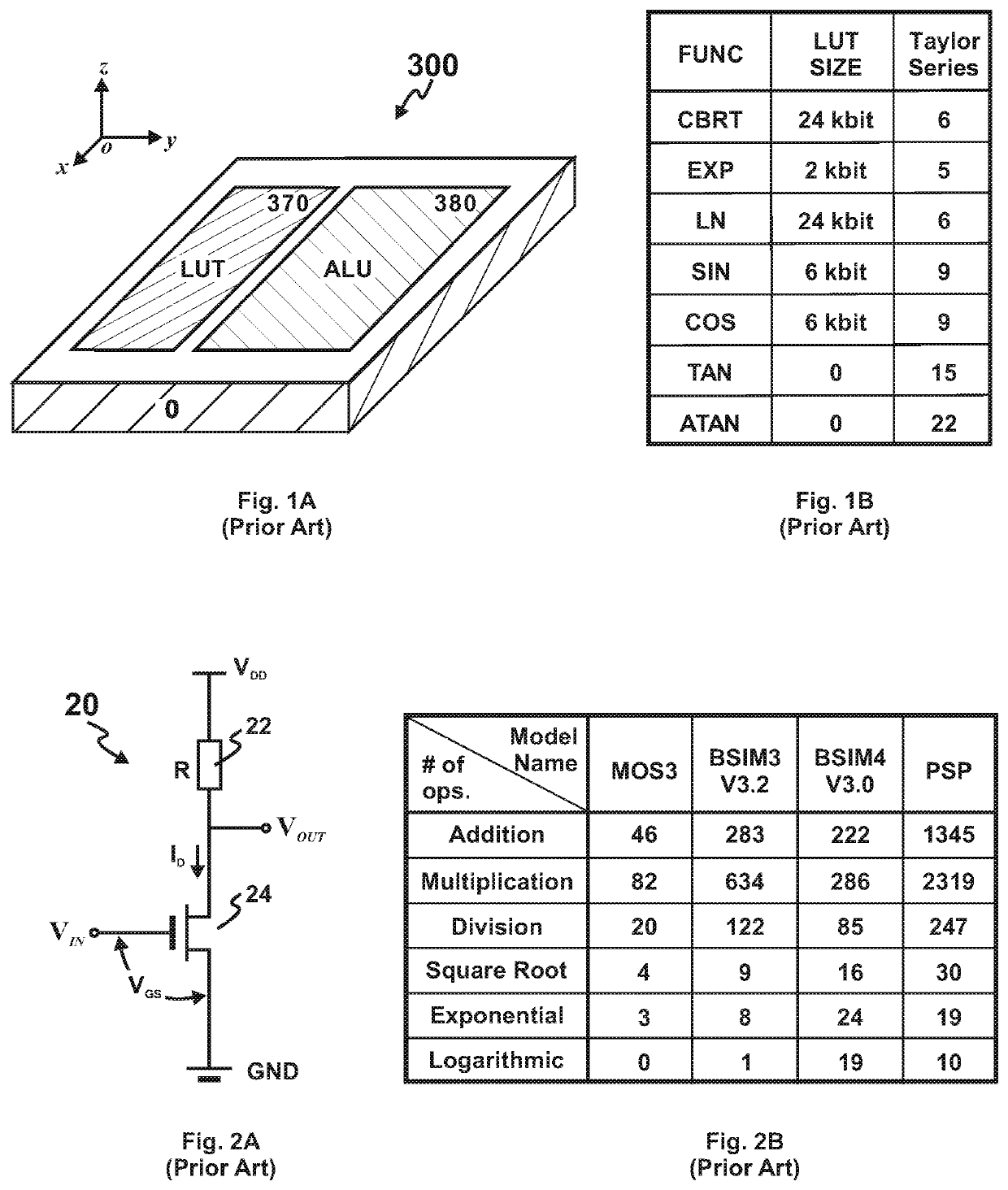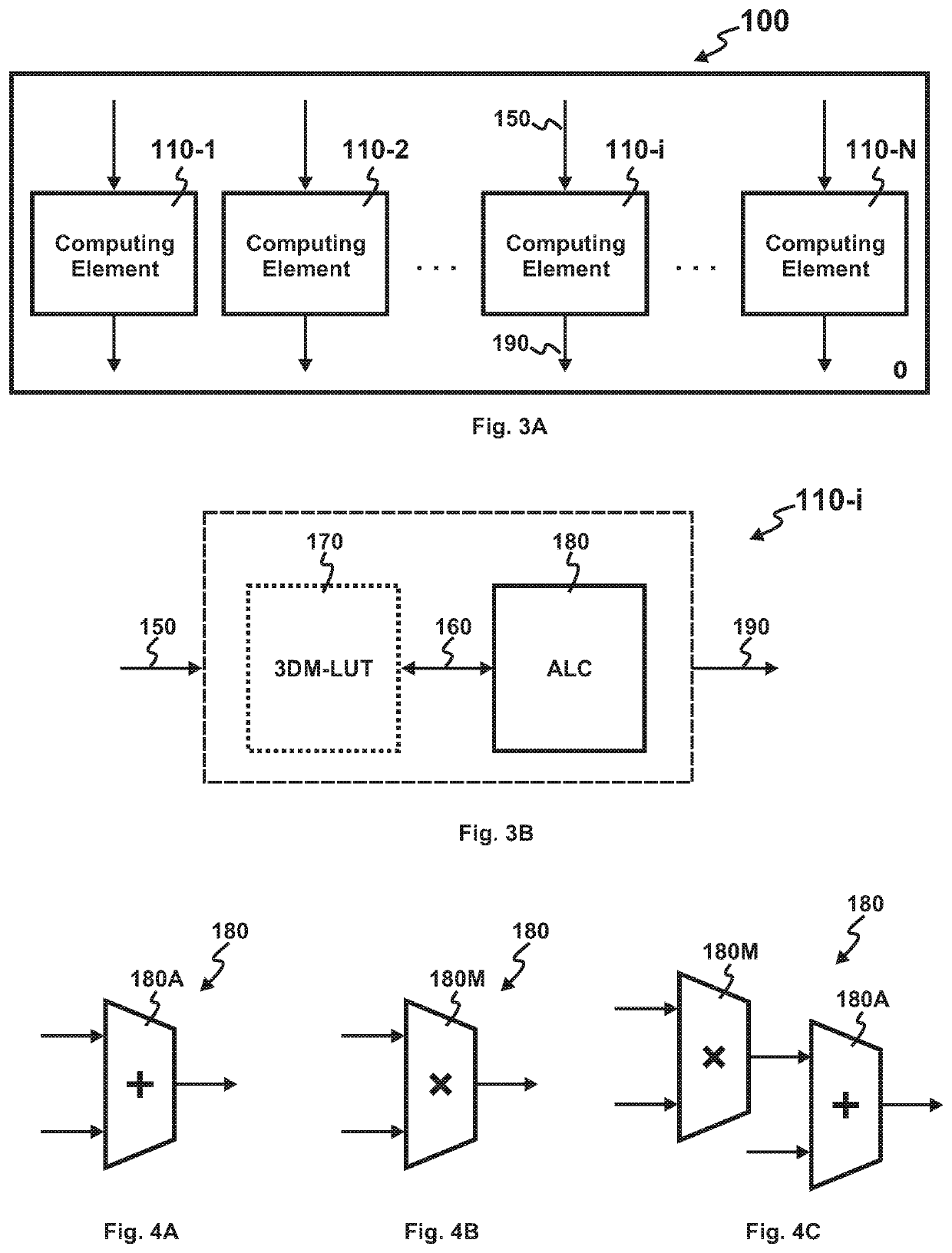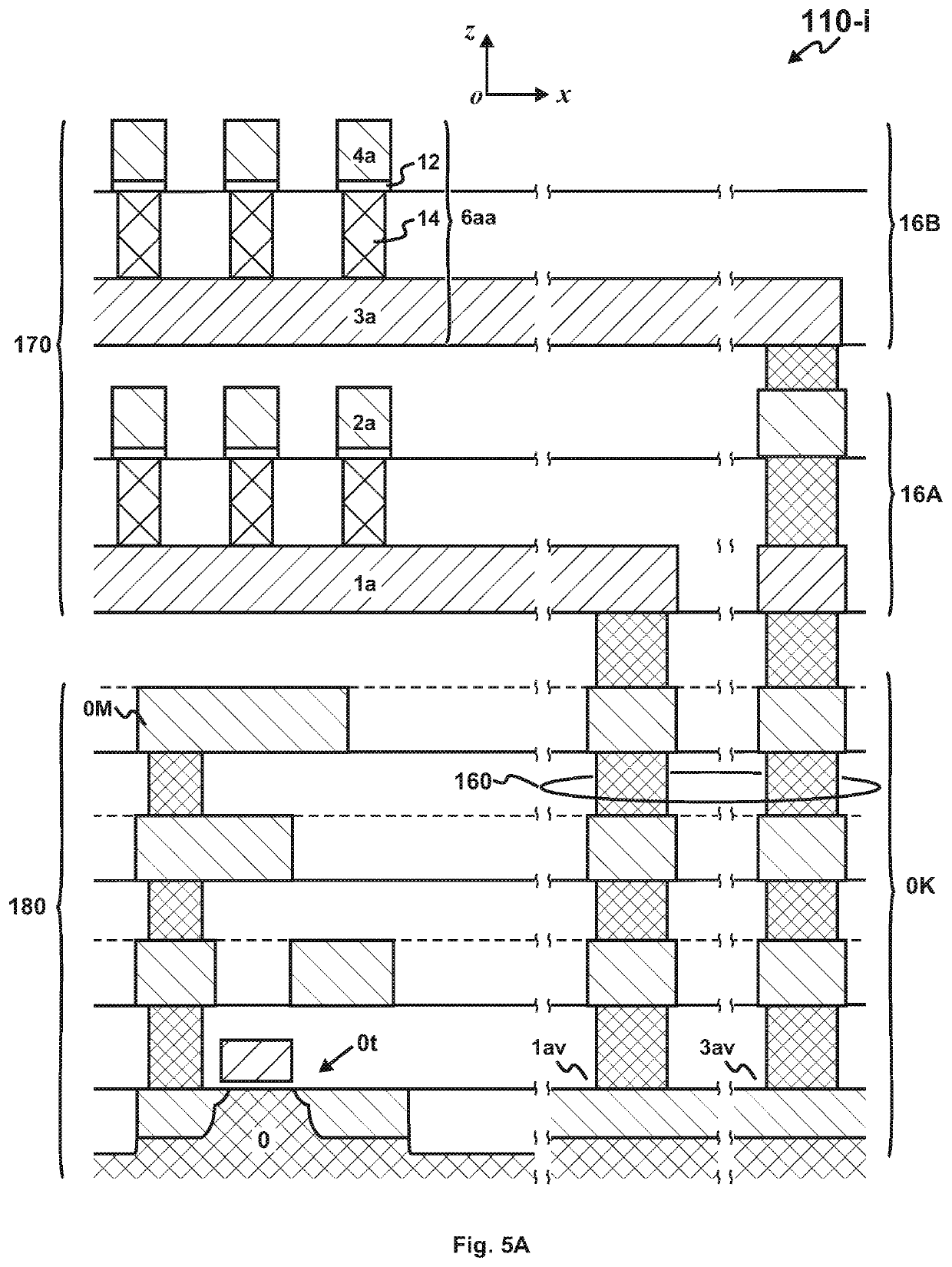Three-Dimensional Processor for Parallel Computing
a three-dimensional processor and parallel computing technology, applied in the field of integrated circuits, can solve the problems of computational difficulty, non-arithmetic functions cannot be implemented by the conventional logic circuit alone, and non-arithmetic functions cannot be realized by the conventional logic circuit, so as to achieve non-arithmetic functions quickly and efficiently, improve computational complexity, and improve computational efficiency
- Summary
- Abstract
- Description
- Claims
- Application Information
AI Technical Summary
Benefits of technology
Problems solved by technology
Method used
Image
Examples
Embodiment Construction
[0041]Those of ordinary skills in the art will realize that the following description of the present invention is illustrative only and is not intended to be in any way limiting. Other embodiments of the invention will readily suggest themselves to such skilled persons from an examination of the within disclosure.
[0042]Referring now to FIG. 3A-3B, a preferred three-dimensional processor (3D-processor) 100 is disclosed. It comprises a semiconductor substrate 0 and an array of computing elements 110-1, 110-2 . . . 110-i . . . 110-N formed thereon (FIG. 3A). These computing elements 110-1 . . . 110-N could realize a same function or different functions. Each computing element 110-i has one or more input variables 150, and one or more output variables 190 (FIG. 3B). It further comprises at least a three-dimensional memory (3D-M) array 170 for storing at least a portion of the 3DM-LUT for a mathematical function and an arithmetic logic circuit (ALC) 180 for performing arithmetic operatio...
PUM
 Login to View More
Login to View More Abstract
Description
Claims
Application Information
 Login to View More
Login to View More - R&D
- Intellectual Property
- Life Sciences
- Materials
- Tech Scout
- Unparalleled Data Quality
- Higher Quality Content
- 60% Fewer Hallucinations
Browse by: Latest US Patents, China's latest patents, Technical Efficacy Thesaurus, Application Domain, Technology Topic, Popular Technical Reports.
© 2025 PatSnap. All rights reserved.Legal|Privacy policy|Modern Slavery Act Transparency Statement|Sitemap|About US| Contact US: help@patsnap.com



